|
|
This is Carl, named after Bill Murray’s character in Caddy Shack.
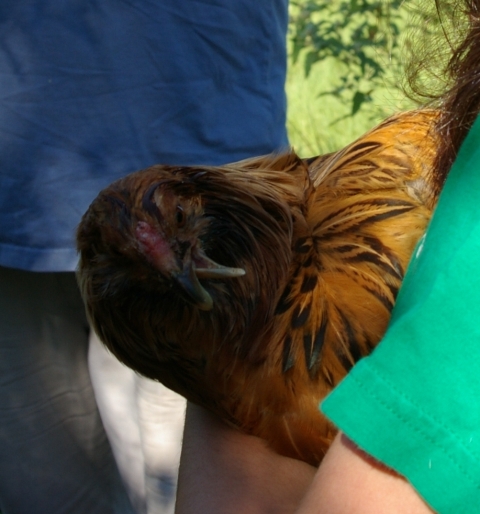
This poor girl is a survivor. She is much smaller than the rest of the Ameraucanas, she has had trouble getting enough food since she was a chick. When we got her, as a tiny chick, she had a broken beak. Carl has always been a bit of an outsider, and yet she is the most trusting chicken I have ever met. She caught on early, that my little girl was going to go out of her way to feed her. She would try to escape just so she could be with her, and, well, get fed. Carl is a bit of a pig, early deprivation and all.
Here she is flying up to me.

Here she is on my arm.

Here she is heading for the food.

Here she is eating.

It may seem like Carl is a rather huge bird, but she is half the size of her sisters.

Carl then has to go back for food.

After Carl has pigged out enough, and perched enough, she takes off.
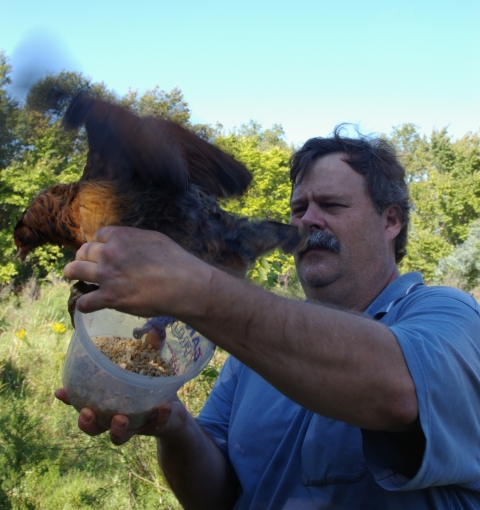
Huge wings and flurry, a bit scary really.
I did not teach Carl this trick. Carl came up with it all on her own. This was her way of not sharing her special bowl of food with the rest of the chickens. It didn’t last long, There are five other chickens that feel that it is perfectly within their rights to fly up on me. Fortunately they are very gentle and don’t dig in with their talons.
Bob
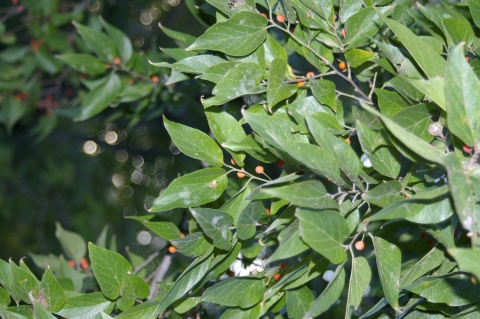
In my area, hack berry trees are everywhere. Most folk have bought into the belief that they are a trash tree. Right now, the berrys are red. This means they are ready to eat. Not a big berry, and there is not much flesh on the large seed inside the berry, but it is tasty like a tiny sweet apple. More of a joy than sustanance. It would take a lot to get full on. Still the taste does make me happy.
One of the mallets I use is made from hack berry. If a wood makes a decent mallet, it is far from being trash.
Bob
I love my chickens, they are truly the best I have ever had or seen.

Alert, fast, bug eating chickens.
The feather patterns are brilliant,
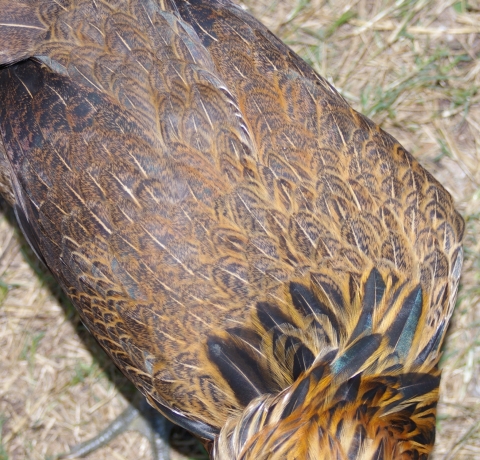
and some are quite striking.
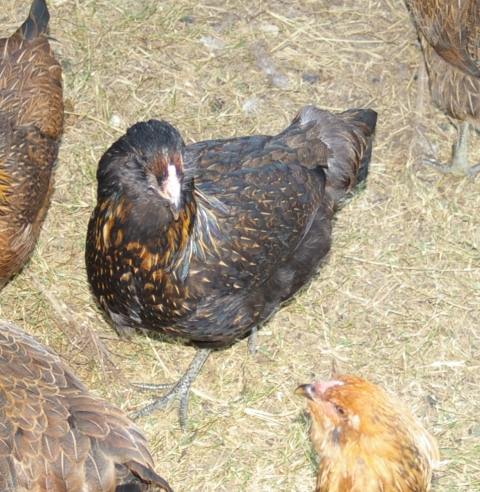
They also lay blue eggs, and will leap up into your lap.
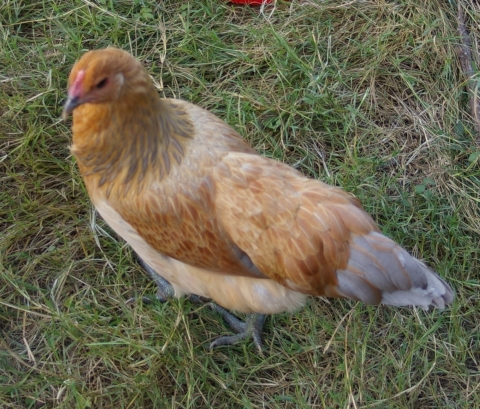
Amongst the blue egg laying chickens there are three types;
Araucanas, which have a lack of tail feathers. They also have ear tufts, this trait is a deadly gene that kills 20 percent of them if it is from one parent or if it is from both parents, all of them. Whatever other qualities they have, I think I would rather not select for a deadly gene so I don’t really want to raise araucanas.
Ameraucanas, have tail feathers, neck muffs, like you can see in the picture above, and beards like you can see below. This bearded girl does not have tail feathers though.
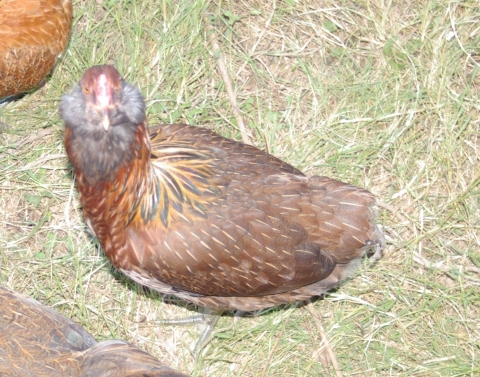
And last, Easter Egg Chickens. These are the non purebred mongrels that still make blue eggs. Aparently a lot of breeders raise and sell Easter Egg Chickens, as one or the other of the two recognised breeds, but in fact they are mongrels.
Not all of these chickens have all the traits, so in fact, I have Ameraucana/Easter Egg Chickens. Not a clearly distinct breed. Nor will I ever have a true flock of Ameraucana’s, I plan to breed for temperament, health and egg laying. After that comes pretty. Inbreeding them to fit a precise physical form is not even on the list.
Bob
So far, I have hammered into shape a bit of steel.
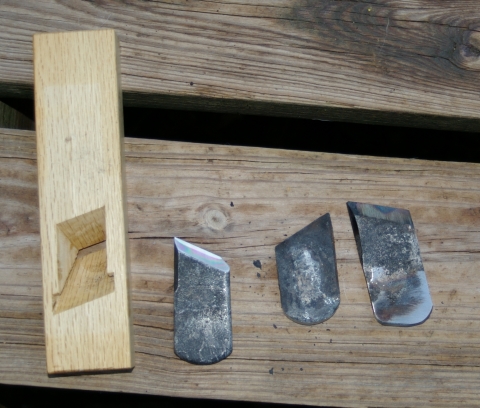
The one on the left is the original. The other two are attempts of mine. Notice that I am not apparently much good at selecting the right size to begin with.
Both of these I think will work, but I want to come a bit closer to the original on the right handed skew blade, which is the middle one.
I do plan to temper and put to use both of these, but I want a matching pair that I made, that are fairly similar. Getting the indentation right on the Japanese Style plane’s bottom edge is harder than it seems. This is a good project for me to learn from.
Bob
Once you have things basically cut, you may still have to fine tune them.
Here I am starting to plane the edges clamped together.
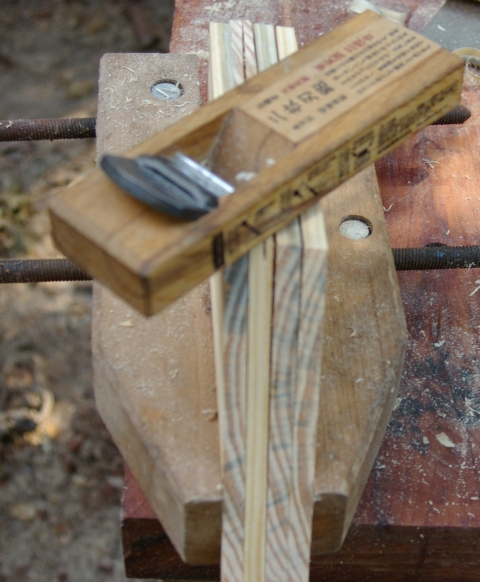
This worked in some spots and one some sides, but there were some grain issues. In this case I chickened out instantly and started using sandpaper.
Here is what I was trying to make.
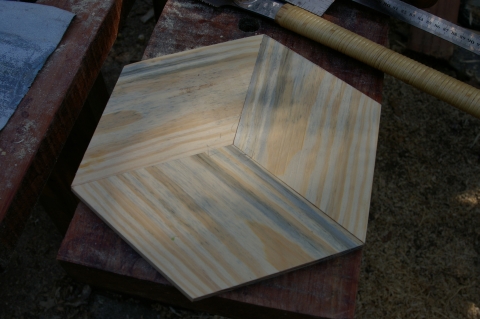
The next step is to do something a bit more compicated. I want the ends to fit together interleaving, to keep out moisture and dust. This means rebates cut in all sides of six diamonds.

I am putting the square grooves on the edges on two sides, rebates, for the sides of the box to mount into. The other two are opposite each other so that they can fit together. I am making it a somewhat loose fit, I plan to have a leather seal on the edges to make them a bit more dust tight.
This is a skew rabbet plane that I am using to precision trim the roughly sawn rebates to nice clean fittings.
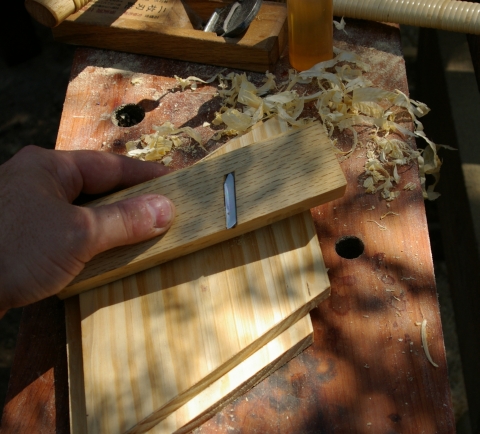
Here is where I am running into trouble,
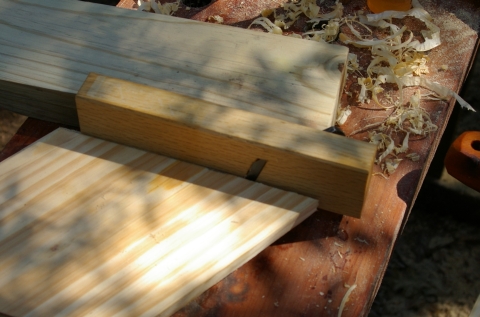
I have the plane propped up in place in a spot that needs planing. The problem is that the grain points right up and at the blade, Since it is a rebate I cannot just flip it over and plane from the other side. Since the rabbet plane in one sided, I cannot just flip it around. I do not have a left handed rabbet plane. I rather need one. This is where starting a project can produce several extra projects. In this case, the tool box gets put to the side for a bit longer, while I make a left handed rabbet plane.
Bob
|
|




















 A page Dedicated to My Writing
A page Dedicated to My Writing
Recent Comments